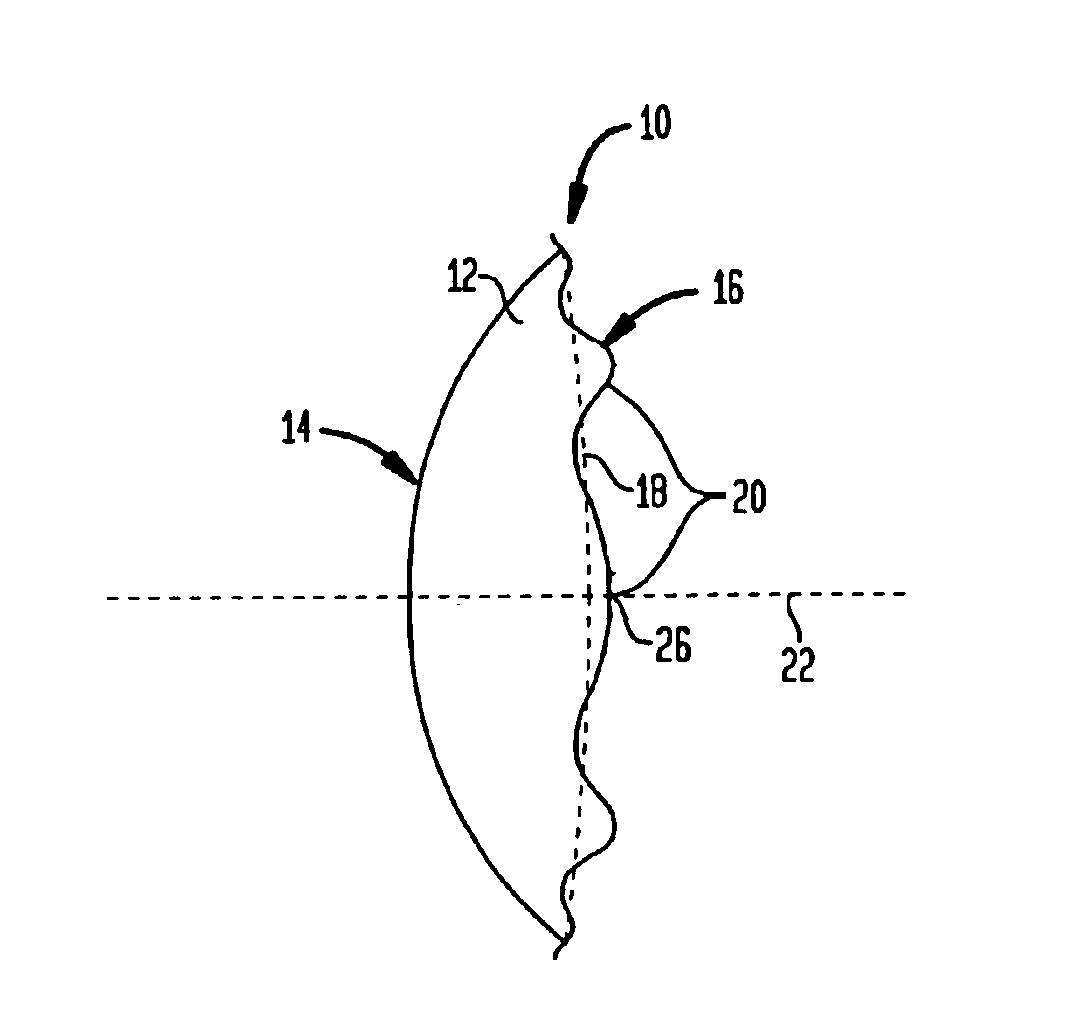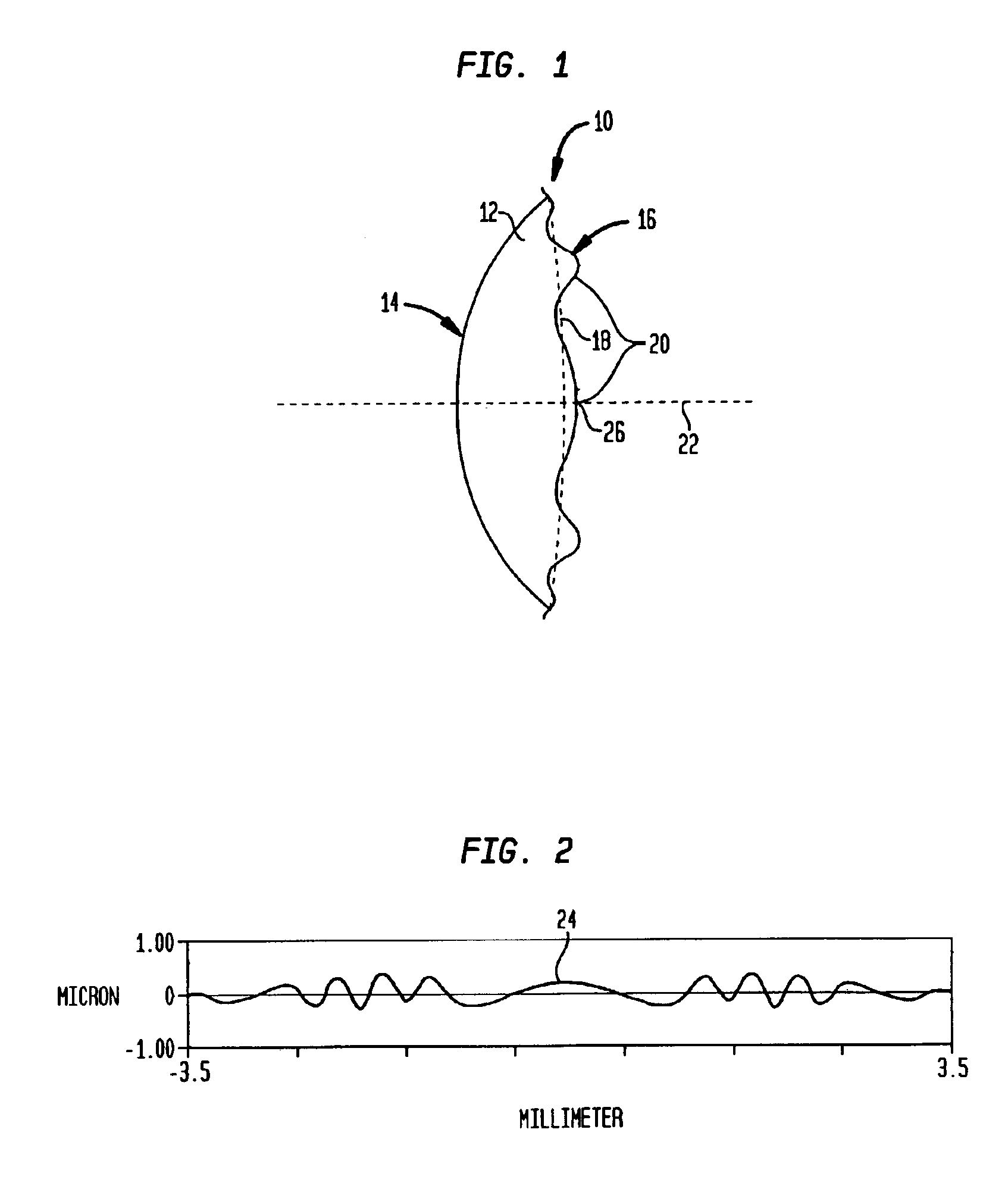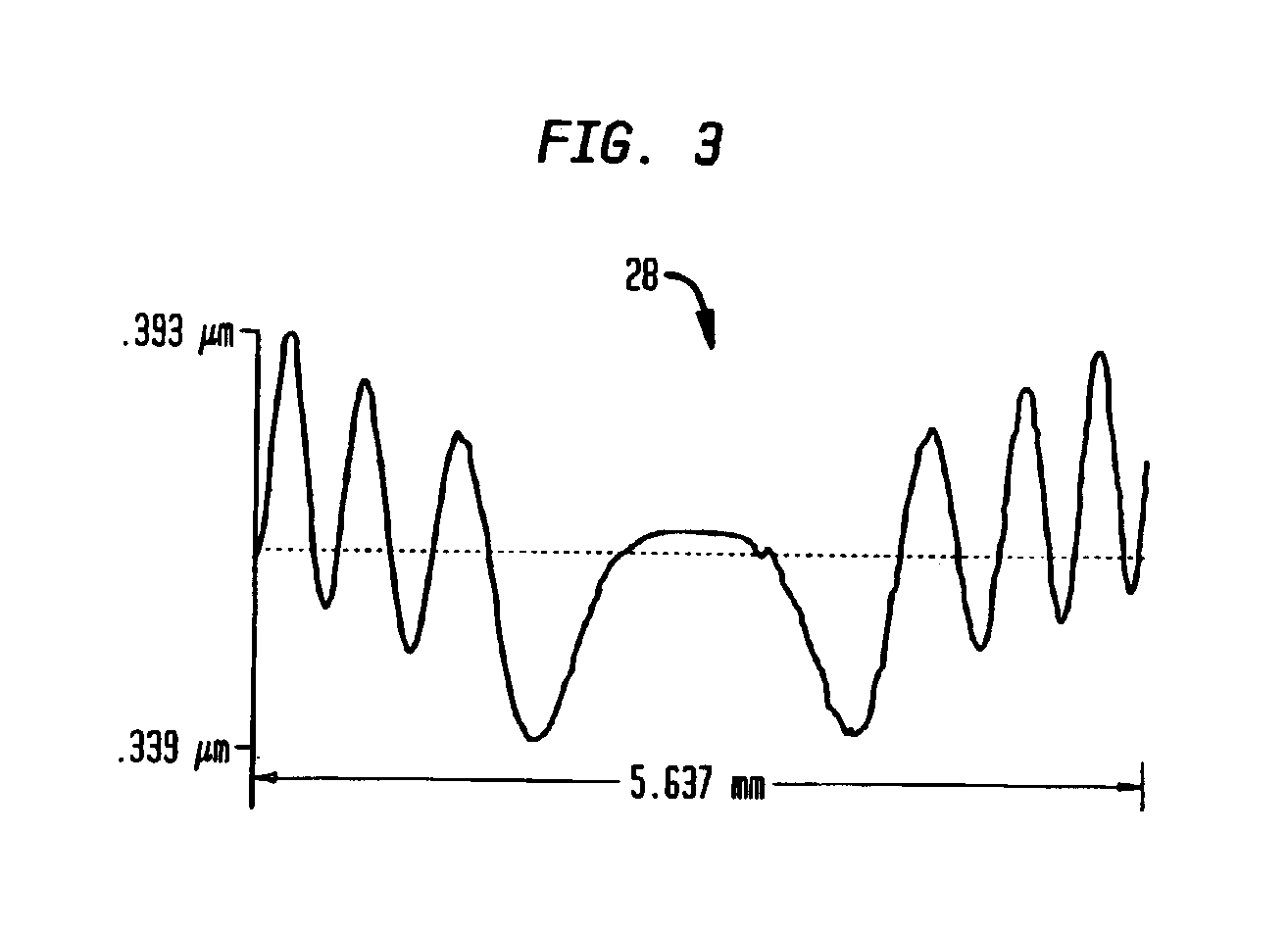Aspheric lenses
a technology of ophthalmic lenses and ophthalmic lenses, applied in the field of ophthalmic lenses, can solve the problems of ophthalmic lenses suffering from a number of shortcomings, significantly degrading their performance, and not providing the best focus at the target object distance, etc., and achieve the effect of improving the depth of field
- Summary
- Abstract
- Description
- Claims
- Application Information
AI Technical Summary
Benefits of technology
Problems solved by technology
Method used
Image
Examples
example i
[0071]One exemplary method for modeling a refractive lens of the invention having surface deviations from a base profile in which a spline fitting procedure is employed is described below. With reference to FIG. 10, a solid curve 42 represents a base profile of such a refractive surface, which is selected in this example to be spherical. The z-axis is selected to be the optical axis of the lens such as the base profile is symmetric about the z-axis. Hence, only the upper portion of the surface, i.e., positive y direction, is considered with the understanding that the variations in the negative y directions mirror those in the positive y direction.
[0072]A plurality of exemplary off-axis locations A, B, C, D, E, F, G, H, and I each having selected z-axis coordinate and offset from the base profile, are chosen. An initial value of slope is assigned to each of these locations. A spline fitting procedure is employed to form an initial surface, e.g., dashed surface 44, that passes through...
PUM
 Login to View More
Login to View More Abstract
Description
Claims
Application Information
 Login to View More
Login to View More - R&D
- Intellectual Property
- Life Sciences
- Materials
- Tech Scout
- Unparalleled Data Quality
- Higher Quality Content
- 60% Fewer Hallucinations
Browse by: Latest US Patents, China's latest patents, Technical Efficacy Thesaurus, Application Domain, Technology Topic, Popular Technical Reports.
© 2025 PatSnap. All rights reserved.Legal|Privacy policy|Modern Slavery Act Transparency Statement|Sitemap|About US| Contact US: help@patsnap.com



